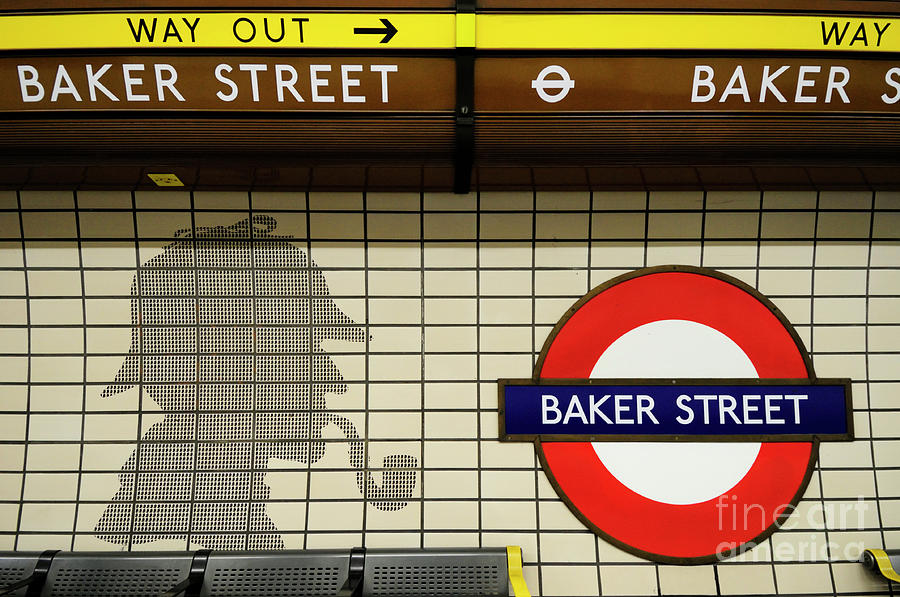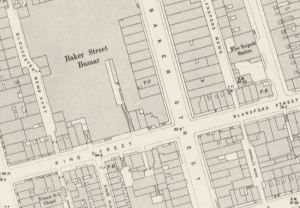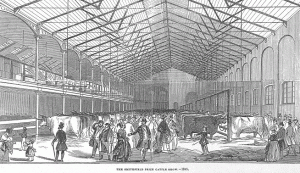Present in Amy Levy’s The Romance of a Shop for only a brief period of time, Baker Street Station is where the Lorimer sisters part after a day spent shopping and walking around in the area of Baker Street. Phyllis in particular actually goes underground into the station, while Gertrude boards an omnibus above ground outside of the Station. (pg. 80) In reality, the Baker Street tube station is one of the oldest surviving stations in the London Underground, and still transports people to this day. Baker Street Station, because of its proximity to the famed 221b Baker Street of Arthur Conan Doyle’s Sherlock Holmes series, is also currently decorated with Sherlock Holmes artwork, to celebrate the area’s perhaps most famed (although fictional) resident.

According to the Charles Booth Poverty Map, the area of Baker Street Station is colored red, meaning the area is mostly middle-class, which makes sense as tourist attractions such as Madame Tussaud’s Wax Museum are located nearby. However, on the 1898-99 map, it’s interesting to note that there is also a spot of dark blue, where Booth has it marked as “very poor, chronic want.” The area over which this poverty lies is marked as St. Cyprian’s Church, which makes me think the church may have been housing destitute and/or homeless individuals out of charity, and it is possible the church could certainly afford to do so because of the middle-class area it is located in.
On the Old Bailey Proceedings website, Baker Street Station, while seemingly in a well-to-do area, also seems like a prime spot for thievery to occur. A man was pick-pocketed of his watch outside Baker Street Station, but this seems to be the most intense crime that took place at the station. To add to Baker Street Station’s reputation of being in a well-to-do area, the alleged pick-pocketer was later declared “Not guilty.”
WORKS CITED
Old Bailey Proceedings Online (www.oldbaileyonline.org, version 7.2, 10 December 2015), August 1886, trial of IKE KENNEDY (70) (t18860803-848).
Pinchen, Liz. “Sherlock Holmes Tiles At Baker Street Tube Station.” Fine Art America. 20 Mar. 2011. Web. 10 Dec. 2015.
Booth, Charles. “Baker Street Station.” Charles Booth Online Archive. Web. 10 Dec. 2015.
Levy, Amy. The Romance of a Shop. Peterborough, Ont.: Broadview, 2006. Print.
“Prime Metro Properties.” The History Of Baker Street. Web. 10 Dec. 2015. <http://www.primemetro.co.uk/Content/About-Prime-Metro/The-History-Of-Baker-Street-.aspx>.




